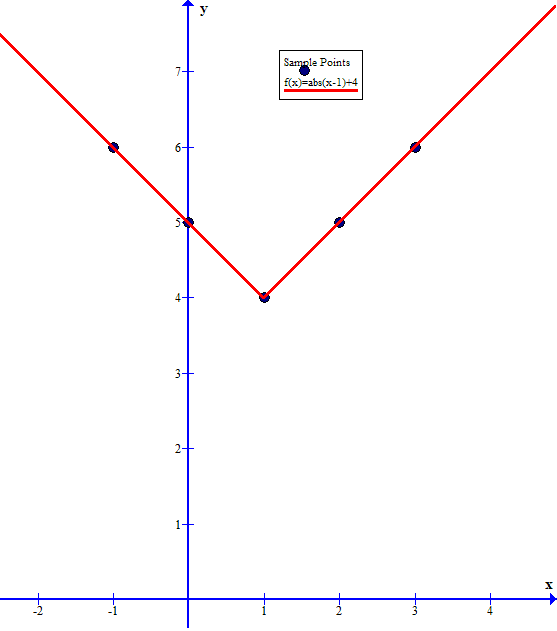How do you graph #y=|x-1| +4#?
2 Answers
See the explanation below
Explanation:
Start by graphing
The function is defined for
When
and
When
graph{|x| [-7.15, 8.654, -0.39, 7.51]}
Next graph,
The graph of
graph{|x-1| [-7.15, 8.654, -0.39, 7.51]}
And finally, graph
The graph
graph{|x-1|+4 [-7.15, 8.654, -0.39, 7.51]}
Your graph should look like:

Explanation:
Generate a few sample points,
one for which
and a couple for each of
The sample points I used were
Plot these points on the Cartesian plane
and draw straight lines extending from the vertex point (where

